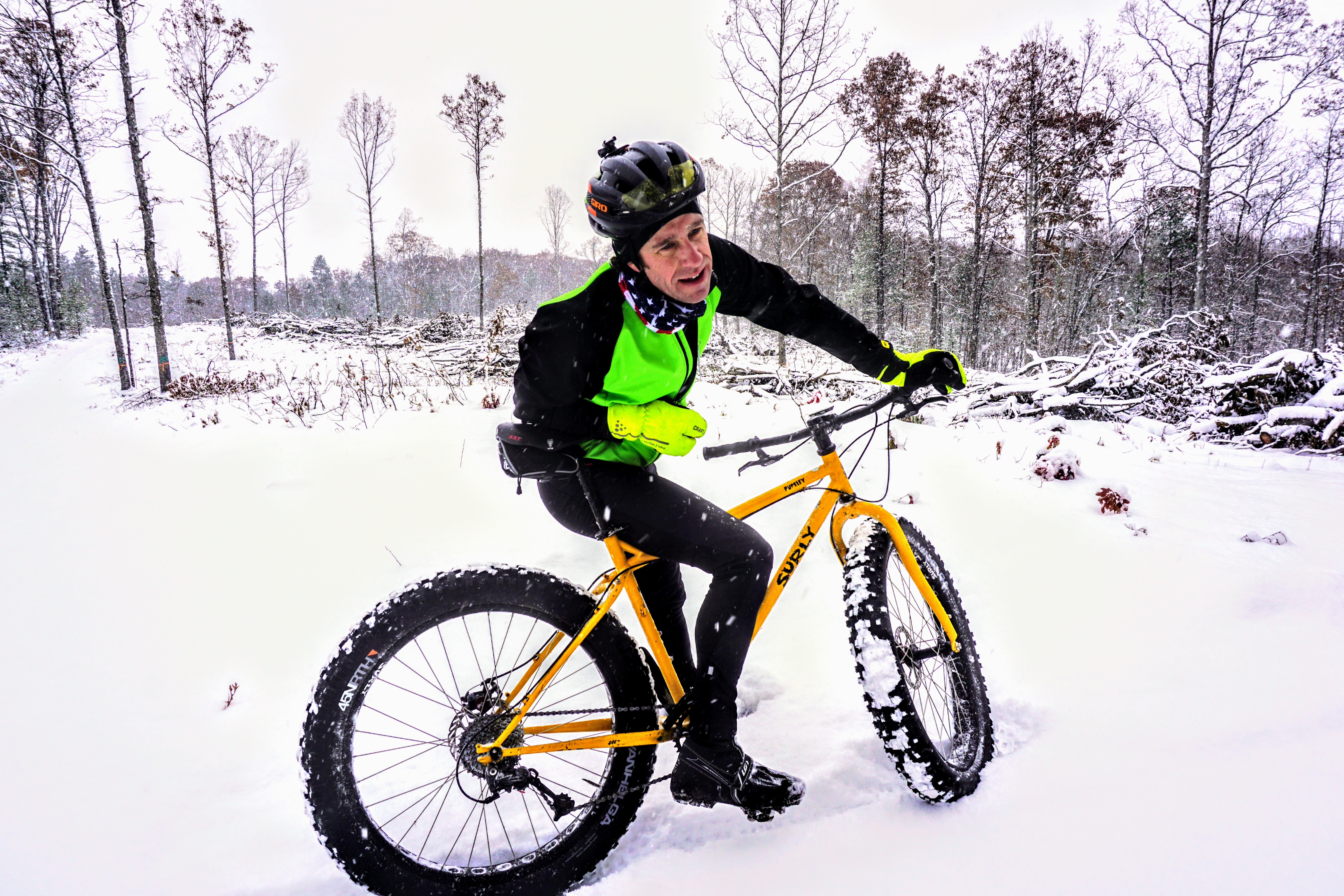
You’ve almost certainly seen a few fat bikes, and odd are, you’ve even given fat biking a shot. While wide tires are pretty fun to ride year-round, for most mountain bikers, they’re a seasonal option for riding groomed trails and at least trying to limit the amount of trainer miles they rack up once the snow falls.
We’re pretty into fat bikes, and you can tell from our winter trail offerings, we’ve learned a thing or two about what makes winter riding fun. We put together three tips that make heading out for the first time a bit more enjoyable. Almost every single one of the people we’ve spoken with who don’t likes fat bikes didn’t do one of these three things, and that’s often enough to spoil the day.
- Dress right. Dressing for winter riding is one of the toughest things to get right, and unfortunately, it’s one that can take a little trial and error to figure. When it comes to preparing for the cold, everyone is different; one clothing combination that works for you may not work for the buddy you’re bringing out for their first ride. The key is to dress in layers that make it easy to adjust, and plan your initial outing in relatively comfortable temperatures. Shoot to ride on a day that’s between 25 and 32 degrees, which is easiest to dress for. Focus on warm gloves and ride flat pedals so that you can wear normal winter boots for the first go.
- Go On The Right Day. There is nothing more variable than snow. Trail conditions can change in a flash, and for beginners, poor riding conditions can make or break your introductions to riding in the winter. Go too soon after a fresh snow or groom, and you’ll be slogging through soft, powdery snow that takes a lot of work just to stay upright. Go after a warm up and you’ll be pedaling through slush; after a freeze, and you’ll wish you would have brought your skates rather than a fat bike. If you’re going for the first time, reach out to an experienced rider or your local trail association for a heads up when the best riding will be in your neck of the woods.
- Air Down. Whatever your tire pressure is set at, go lower. A four or five inch tire offers a massive amount of volume to fill up, and even experienced mountain bikers tend to run too much pressure. A ‘harder’ tire sinks into the snow, not only causing ruts in the trail that can be hard to fix, but also making it much more likely to lose traction while pedaling or turning. The exact number can vary based on conditions, rim width, tire width, and rider weight, but as a good starting point, hit the parking lot with 6psi and go down from there. Trust us, you’ll be glad you did.
Fat biking is a really cool way to break up winter that’s extremely accessible. If you can ride a mountain bike, you can fat bike, and even if you’re getting a little bored with your local trails, winter riding makes everything new again. Mix in a few fat bike rides per week with your trainer efforts to keep winter riding fresh and fun. By the end of February, you’ll be in better shape and in a much better mood.

